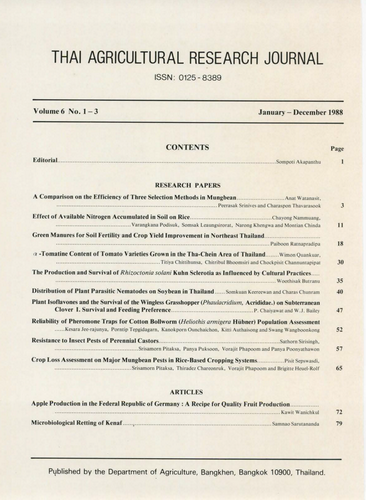The Production and Survival of Rhizoctonia shlani Kuhn sclerotia as Influenced by Cultural Practices
Abstract
Rice, corn and mungbean were planted in sequential cropping systems under mazimum and minimum cultural pratices. Rhizoctonia solani was inoculated once during the first cropping season. The number and survival of R. Solani were investigated before sowing and after harvest of each crop. The results demonstrated that minimum cultural practices increased sclerotia density and caused more serious disease infection relative to maximum cultural practices. The cropping sequence mungbean-rice mungbean with minimum cultural practices had the highest capacity to carry viable sclerotia relative to other cropping sequences. As a result, rice sheath blight intensity in the mungbean rice-mungbean sequence was higher than in corn-rice mungbean sequences.
Downloads
Published
How to Cite
Issue
Section
License

This work is licensed under a Creative Commons Attribution-NonCommercial-NoDerivatives 4.0 International License.
Thai Agricultural Research Journal



